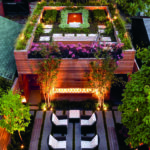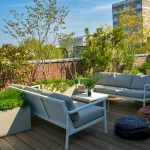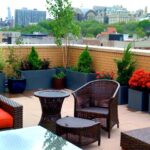Roof garden design is becoming increasingly popular as urbanization continues to take over our cities. These unique spaces provide a breath of fresh air in the concrete jungle, offering a peaceful retreat for both residents and visitors. When it comes to creating a roof garden, there are several key factors to consider in order to maximize the functionality and beauty of the space.
One essential aspect of roof garden design is the selection of plants. Since rooftop gardens are typically exposed to more sun and wind than traditional gardens, it is important to choose plants that are hardy and drought-resistant. Succulents, grasses, and herbs are popular choices for roof gardens as they require minimal maintenance and can thrive in challenging conditions.
Another important consideration in roof garden design is the layout and structure of the space. Utilizing raised beds, trellises, and container gardens can help maximize the available space and create a visually appealing design. Vertical gardening techniques, such as installing wall-mounted planters or creating a living wall, can also help to optimize the space and add a unique element to the garden.
Incorporating seating areas, pathways, and lighting into the design of a roof garden can help create a functional and inviting space for relaxation and entertainment. Adding comfortable seating, such as benches or lounge chairs, and creating designated areas for dining or socializing can enhance the usability of the space. Additionally, installing pathway lighting or string lights can help to create ambiance and make the garden usable at night.
When designing a roof garden, it is important to consider the weight-bearing capacity of the roof and consult with a structural engineer to ensure that it can support the added weight of the garden. Additionally, proper drainage is essential to prevent water damage to the roof and ensure the health of the plants. Installing a waterproof membrane, drainage system, and using lightweight planting materials can help to mitigate these risks.
Overall, roof garden design offers a unique opportunity to create a green oasis in the midst of an urban environment. By carefully selecting plants, designing a functional layout, incorporating seating and lighting, and ensuring structural integrity and drainage, a roof garden can provide a beautiful and functional outdoor space for all to enjoy. With a little planning and creativity, a rooftop garden can transform a drab space into a vibrant and inviting retreat.
















